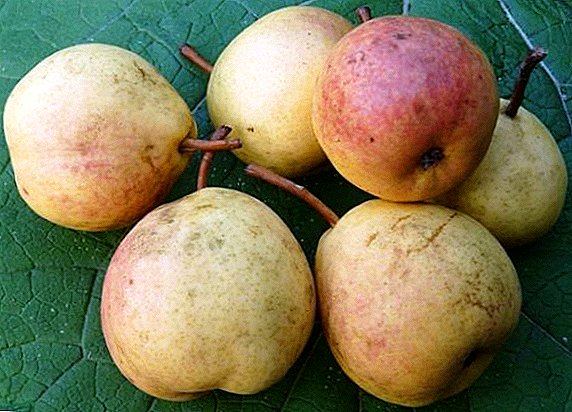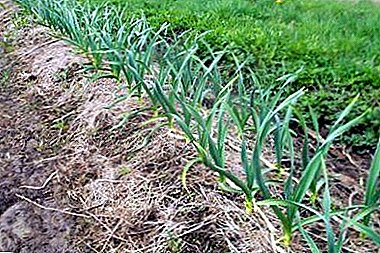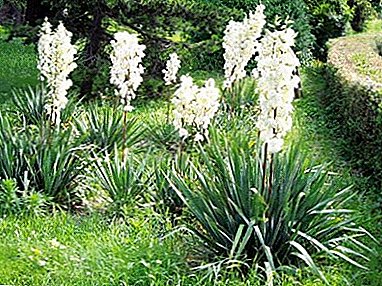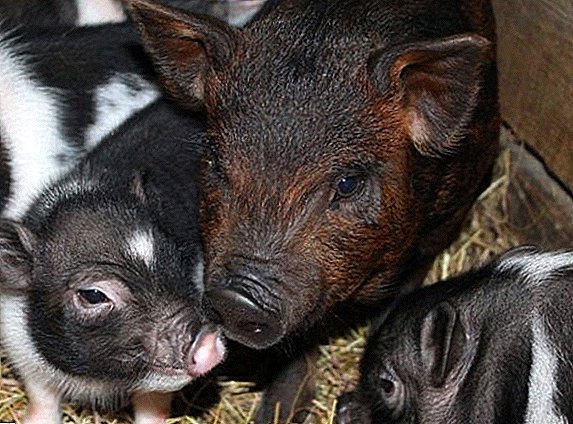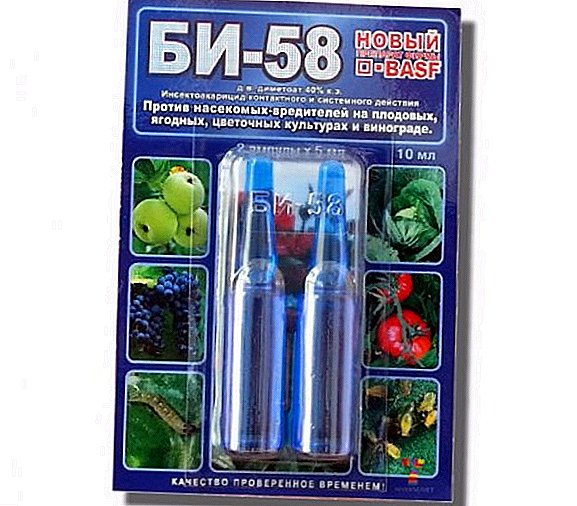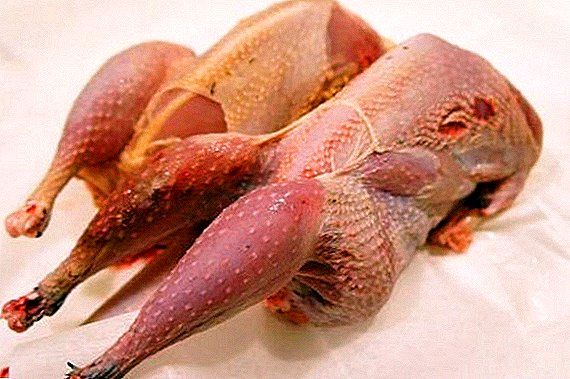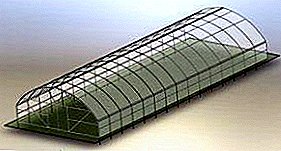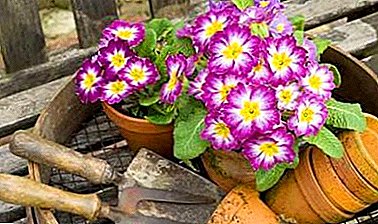
The snow is still not completely gone, and in the flowerbeds the bright inflorescences of primroses are already visible. They, as the first harbingers of real warmth, delight everyone with their delicate flowers and rich green leaflets. Feel great in the apartments, maintaining its decorative appearance throughout the year. Primroses are unpretentious - even a novice will cope with their cultivation. It is enough to know the basic requirements for planting and caring for the plant.
How and when is the plant planted?
In most cases, primrose planted seedlings. This is done in the second year of the seedling’s life in spring or autumn. Repot the plants once every 4 years, as the bush grows. At the same time carry out the separation of rhizome.
In open ground
Seedlings of primrose are planted in open ground, depending on the size of an adult plant, at a distance of 15-20 centimeters from each other.
Sowing at home
Planting primrose seeds at home is simple and accessible to both professional and novice.
For starters, decide on a grade. Here the choice is truly huge. Experts identify 23 sections of primroses, each of which contains many species and varieties. Primrose seeds can be purchased in specialized stores, or collected by yourself.
 Germination is high, but you should remember about monitoring the shelf life of seed. The older the seeds, the lower their quality.
Germination is high, but you should remember about monitoring the shelf life of seed. The older the seeds, the lower their quality.
Preparation of primrose seeds for planting includes:
- stratification;
- soak;
- dressing (in the event that the seeds were collected independently).
Stratification is necessary for most species of primrose, except for fine-toothed and ordinary. It is carried out in several ways: in the refrigerator or sowing seeds on the snow. When using frost stratification, the seeds are placed for at least 12 hours in the freezer, or the container with the ground and seeds are placed there. The stratification method is also used by low positive temperatures. It is easier to use, but often less effective.
When soaking primrose seeds, it is important that the seeds do not pick up a lot of moisture, but simply swell and wake up. The procedure can be carried out by placing the seeds on the surface of a damp foam sponge or cloth. After that, put everything in a plastic bag, leaving it in the refrigerator for a week, at a temperature of + 2 ... +5 ° С. To protect against diseases Experts recommend soaking with the addition of fungicides or using a solution of potassium permanganate.
If stratification is carried out, primrose seeds are sown on dry ground superficially, without falling asleep from above. At the same time it is important to observe the sowing density - there should not be more than 5 seeds per square centimeter.
When sowing primroses that do not need freezing, sowing is done on moist soil. After which the containers are placed in conditions favorable for seed germination.
It is recommended to cover the container with sown seeds with glass or plastic bag and place it in a room with bright enough, but diffused light and a temperature of 16-18 ° C. Shoots appear in two - three weeks.
The more time has passed since the time of ripening and seed harvesting before planting, the longer it will take to wait for the first shoots. The glass is cleaned regularly and airing is carried out., gradually accustoming seedlings to environmental conditions. After two weeks, the seedlings are strong enough and the glass or film can be removed.
Primrose seedlings grow and develop very slowly. The first pick is made at the stage of 1-2 true leaves. Seedlings are planted in separate cells or in a common container at a distance of 5 centimeters from each other. During this period, special attention is paid to irrigation. The soil should be slightly wet. Dry soil will lead to the death of the plant. But there should be no stagnation of water. It will be sufficient to spray from the spray, trying to avoid contact with the leaves.
 The second picking is not necessary, it is carried out in the event that the plants are already crowded in their packaging, and the weather conditions on the street still do not allow them to be planted in open ground. In this case, the distance between the discharged plants should be about 15 centimeters, or the seedlings are transplanted into separate larger containers. During the picking, they try to disturb the plant root system as little as possible.
The second picking is not necessary, it is carried out in the event that the plants are already crowded in their packaging, and the weather conditions on the street still do not allow them to be planted in open ground. In this case, the distance between the discharged plants should be about 15 centimeters, or the seedlings are transplanted into separate larger containers. During the picking, they try to disturb the plant root system as little as possible.
The planting of primrose seedlings in the ground is carried out in the second year of plant development.
Primrose seedlings can be planted in flower beds or used to grow a house on window sills or a balcony.
From the video you will learn how to sow primroses. Seed Stratification:
How to plant and what conditions to meet?
- Most favorable periods for planting Primroses in the ground is the end of April - the beginning of May, when there is no threat of frost, and the beginning of autumn. They also spend the summer and podzimny landing of primroses.
- Scheme. For planting are chosen the strongest and most developed seedlings. They are planted so that when they grow they do not interfere with each other. The minimum distance between plants is at least 15-20 centimeters.
- Lighting. When choosing a place for primrose, take into account the fact that the primrose prefers a place slightly shaded, with diffused light. If flowers are used to design Alpine slides, then they should not be located on the southern slope.
- Priming. Primula loves light fertile soils with good drainage, does not tolerate stagnant water. When preparing the wells add to the bottom of the expanded clay, small pieces of broken bricks or coarse sand.
- Watering and moisture. Watering is carried out moderately. Primula loves moist soil, especially during flowering, but when there is an excess of moisture, root decay begins.
- Temperature. The plant feels great at temperatures from +10 to 25 ° C. During flowering, the optimum temperature is + 16-20 ° C.
- Primrose fertilizer. When grown on depleted soils and during the flowering period, it is good to fertilize primroses. If you carry out feeding before flowering, the plant produces a large number of leaves and does not bloom.
They feed a weak solution of complex mineral fertilizers, with regularity no more often than once every 2-3 weeks.
- Primrose transplantation and division of the bush. As the bush grows, but at least 1 time in 4-5 years, the primula is transplanted to a new place, while breeding the bush is also carried out. This happens in the following way:
- Primrose bush gently dug and cleaned from the ground.
- The rhizome is divided into several parts.
- To avoid infection, cuts are covered with wood ash.
- The separated parts of the rhizomes are planted in a flower bed.
- For 2 weeks, watering the plants daily.
More information about when and how to plant a garden primrose, as well as the reproduction and care of the plant is described here.
If the transplant is carried out in the fall, young bushes shelter before the onset of cold weather.
We talked about the subtleties of primrose care and transplanting in the fall here, and in this article you can read about the features of preparing a flower for winter.
A photo
Next you can see a photo of a perennial plant that can be grown as a garden or indoor:





Differences and features of the procedure for different types of flower
Ushkovaya
They got their name for the characteristic shape of the petals - in the shape of an ear. It does not tolerate overmoistened soil, and thanks to fleshy leaves, it can maintain its vitality for some time, even with the earthen coma completely drying out. Well tolerate even the scorching sun, but prefer to grow in partial shade.
The ear primrose feels great on a mixture of leaf humus and river sand. They do not like “fat” and very nutritious soils, apparently because they grow in nature in rocky terrain.

Japanese
When planting a Japanese primrose, the method of planting freshly harvested seeds immediately into the ground showed itself well. Also used the method of dividing the bush, cuttings of leaves and cuttings of roots.
This type of primrose loves the increased soil moisture, especially in spring.
Prefers open, well lit places. It responds very well to top dressing, they are carried out at least 4 times per season. In winter, the plant requires shelter. These features are important to consider when choosing places for planting and caring for a Japanese primrose plant.

Scottish
Refers to mealy primroses. Often used to design alpine slides and rockeries.
Poor tolerated waterlogging and stagnation of water. When planting this variety, it is important to take into account soil drainage. Feeding is carried out moderately, with a weak solution of mineral fertilizers.

How to care?
Primula extremely unpretentious in the care. If the planting site is correctly chosen, then care will be in periodic moderate watering, fertilizing with a weak solution of complex mineral fertilizer during flowering, transplanting every 4-5 years and removing weeds.
About the care of a garden primrose and a plant at home, you can learn from this article.
Seasonal features
- Landing primroses in the spring is carried out after the establishment of consistently positive temperatures in April - May. Flowering is expected in a year.
- In the summer, it is possible to sow seeds that have only ripened and harvested directly into the ground. Spend it at the end of July - August.
- Podzimnuyu landing primroses consider the most effective. Additional care is not required for the plant, it is enough to protect the plants with covering material before the onset of cold weather. Flowering is possible next spring.
Possible diseases
The cause of most primrose diseases is excessive soil moisture. These include:
- Gray rot.
- Rot root collar.
- Leaf spot.
Primrose is treated with fungicides and, of course, optimizes the level of soil moisture. Damaged plant parts are removed. Periodically, primroses are affected by aphids and caterpillars. For the protection of plants using insecticides of the latest generations.
The primrose combines amazing ornamental and unpretentious care. This is one of the first flowers that delight our eyes in early spring. And from the diversity of species and colors of primroses scatter eyes. Constantly there are new varieties and hybrids.
Evenly primroses enjoy the love of many gardeners all over the world. In many countries, societies of connoisseurs of these wonderful flowers have been created, festivals and exhibitions are held, the popularity and prevalence of this plant is constantly growing.


